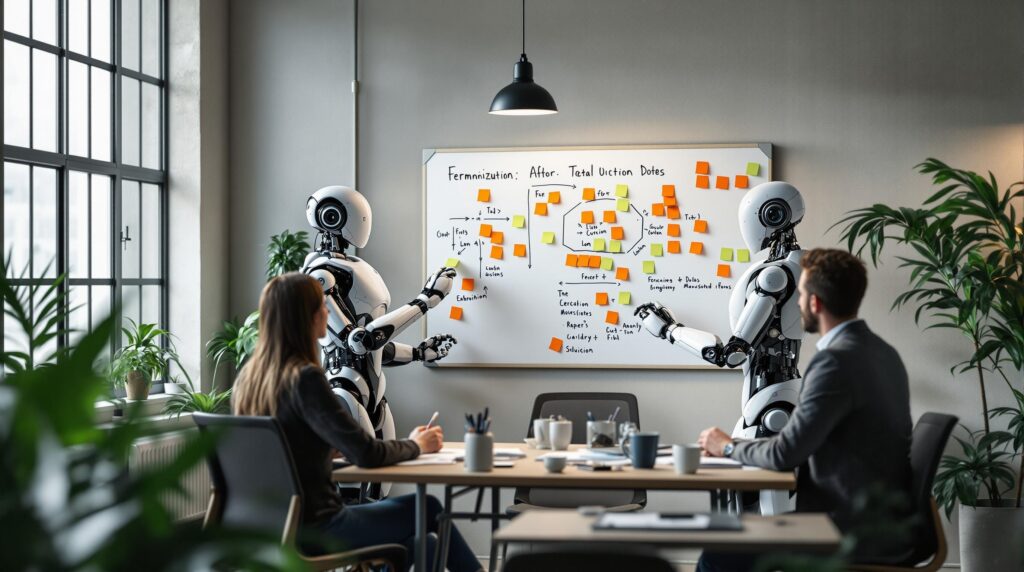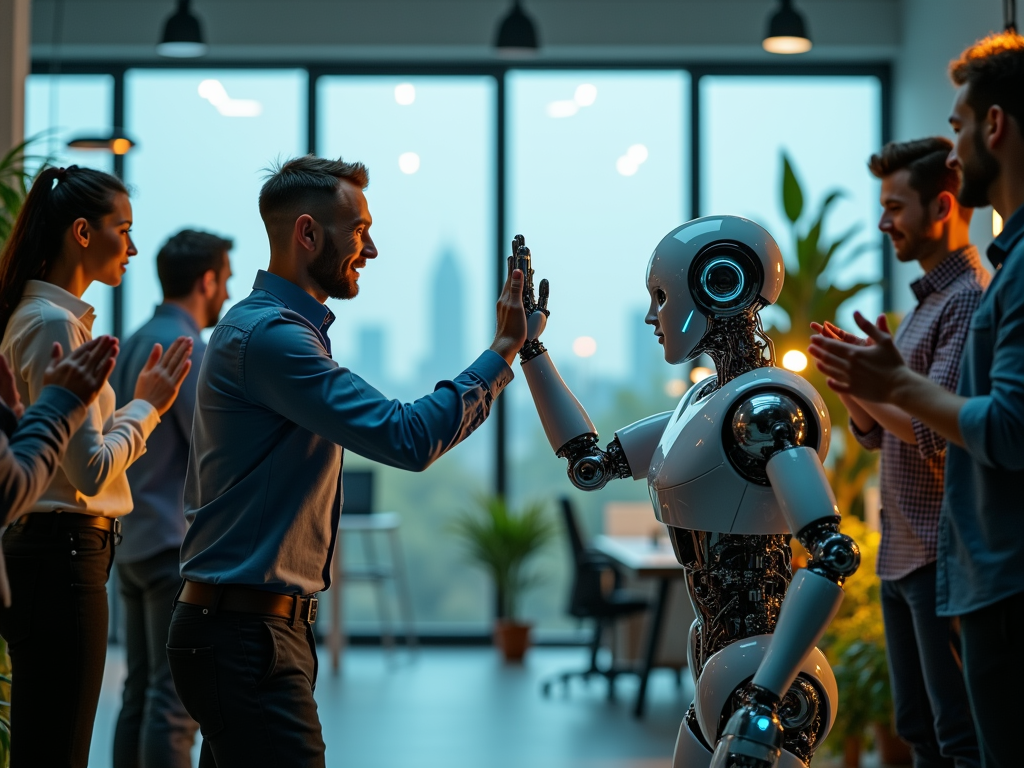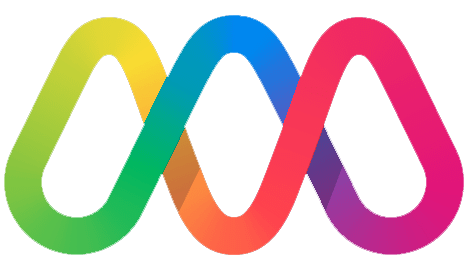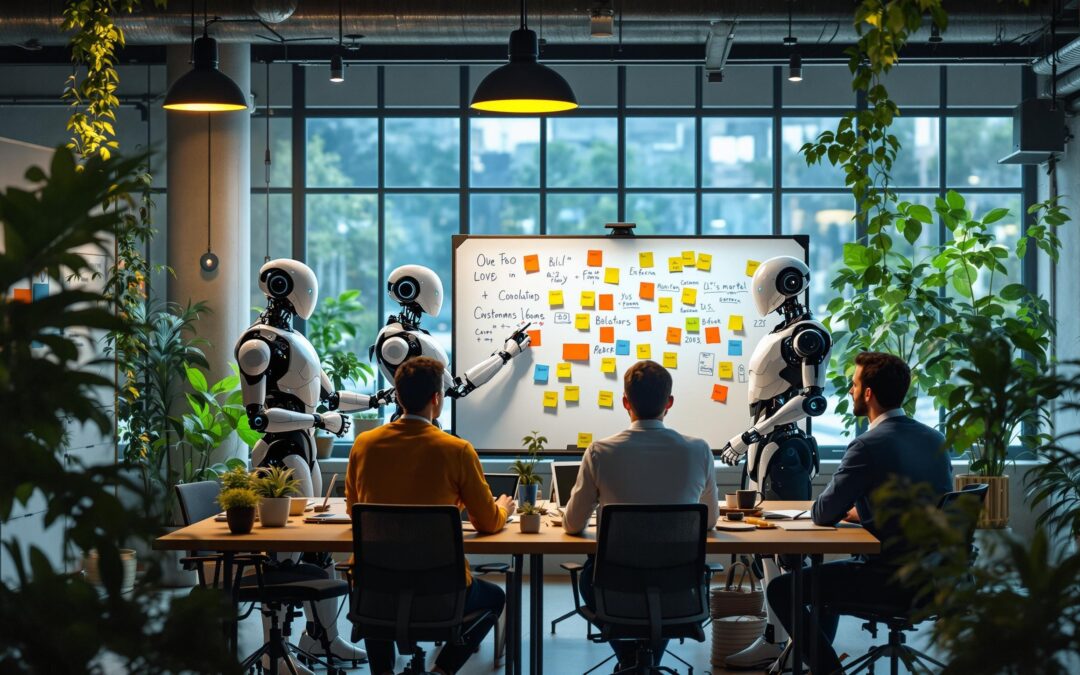We are entering a new phase of software product delivery.
Fueled by rapid advancements in artificial intelligence, agile teams as we know them today are evolving into leaner, smarter, and more collaborative human–AI hybrids. In this blog post, I’ll share my predictions on how AI tools are going to reshape software delivery teams as we know them.
Recent data and industry insights reveal that AI-powered coding assistants and LLM-based agents are already accelerating development cycles. Tools like GitHub Copilot have demonstrated significant productivity gains—some studies even show developers completing tasks up to 55% faster when assisted by AI. Funding for AI-driven coding tools has surged, with over $1 billion invested in these technologies, signaling a strong belief in their transformative potential.
These trends suggest that the repetitive, time-consuming aspects of coding — writing boilerplate code, debugging, and even generating documentation — are increasingly being offloaded to the AI-powered tools. As a result, developer role is shifting from manual coders to orchestrators who guide and validate AI-generated outputs.
The question is: what comes next?

Phase 1: The Great Compression (2025–2027)
“AI won’t replace teams—but teams using AI will replace those who don’t.”
Imagine a future where the conventional 10-person agile team gives way to a dynamic collaboration of human experts seamlessly supported by an array of specialized AI agents.
In the nearest future, AI will be able to assume critical functions, shaping the human roles in the team.
- The Code Whisperers
Tools like GitHub Copilot evolve into full-stack AI developers. By late 2026, they’ll autonomously:
- Convert Figma designs into production-ready components.
- Fix security flaws and refactor code optimizing performance.
- Automate unit, functional, security and performance tests
- Analyse system architecture, data flows, and scalability, and suggest system-wide improvements.
With AI-agents on their side, human development orchestrators could easily take on a merged architect-development-tester role which would focus on goal-setting, coordination, and verification of the work produced by the AI-agent teammates.
2. The Instant Analyst
Imagine an AI product analyst that instantly generates product ideas by analyzing customer feedback big data coming from every channel, prioritizes these ideas based on the results of the previous experiments, user feedback and A-B tests. The product management agent that knows all the details on all the customers, discovers trends, and continuously studies the competition and industry trends, and creates and prioritizes team backlog in a matter of minutes, simultaneously setting tasks for development AI-agent teammates.
Empowered by these tools, Product Managers would take responsibility for the final product direction decisions and validate AI-generated insights to compensate for hallucinations.
At the same time, developing a T-shape skill-set becomes more important for the product professionals. Knowledge of AI tools would allow product professionals to make simple modifications of the products by prompting AI coders, instead of writing stories for their fellow teammates.
Additionally, AI agents would take care of any documentation, user guidelines, and other mundane tasks, freeing up PMs time to focus on the strategic vision and product positioning.
3. Self-Healing Systems
Testing AI agents will continously run regression and integration, while generating and automating edge-cases. Majority of Bugs are fixed on the spot without escalation to the dev team, keeping the team focused on the next big thing.
Team Composition
With these tools at disposal, traditional agile teams would compress by half. With analysis, development and testing requiring less time, teams gain more autonomy are empowered to effectively oversee the entire product lifecycle.
Phase 2: The Hybrid Team (2028–2030)
“Meet our new hire — an AI agent with a specialized skillset.”
By 2030, software teams resemble startup studios: small human-AI teams that deliver products 10x faster. Here’s what changes:
Role Mergers
Developer-Testers: A single human oversees AI coding and testing agents, merging two roles.
Analyst-Product Owners: AI aggregates customer data, letting one person handle strategy and requirements.
The AI Coach: AI acts as a delivery professional, predicting blockers, forecasting delivery based on previous data, and orchestrating cross-team coordination.
Team Composition
A typical product team in 2030 includes:
1 Product Architect (human): Defines vision, prioritizes AI-generated ideas, and manages stakeholder expectations.
1 AI Orchestrator (human): Trains and audits AI agents; the “translator” between business and machines.
5-10 AI Agents (autonomous): Specialized LLMs for coding, testing, legal, compliance, and customer research.
Phase 3: The AI Partner Era (2030+)
“We don’t use AI—we collaborate with it.”
Beyond 2030, AI evolves from a tool to a teammate. Key shifts:
AI Agents Gain Institutional Memory: Your coding AI knows the entire architectural landscape, and remembers every past project, avoiding mistakes. They retain organizations’ knowledge, help onboard and mentor new human employees.
Emotional Intelligence Integration: Testing AI detects subtle UX frustrations by analyzing vocal tones in user interviews, user navigation and product use patterns.
Self-Evolving Systems: AI developers propose architecture changes, debate options with humans, and iterate autonomously.

Will Humans Still Matter? (Spoiler: Yes)
Even in 2035, critical human roles remain:
The Ethical Guardian: Ensuring AI doesn’t sacrifice privacy for innovation.
The Creative Provocateur: Humans excel at “illogical” innovations (e.g., TikTok’s algorithm prioritizes spontaneity over efficiency).
The Emotional Intelligence Guide: Human touch would still define success of products.
The Storyteller: AI can’t replicate the founder’s passion when pitching to investors.
As OpenAI’s CTO recently stated: “AI is the ultimate assistant, but vision without humanity is just noise.”
Preparing for the AI-Augmented Future
For Developers: Master “AI whispering”—the art of guiding LLMs to get the desired results.
For Delivery managers: Invest in AI agents as you would in human talent — train them, audit them, and learn to coordinate them.
For All: Double down on uniquely human skills: ethical judgment, cross-domain creativity, and emotional intelligence.
Conclusion: Smaller Teams, Bigger Impact
The future isn’t about job losses — it’s about leverage. A solo developer with AI agents could achieve what once required 10 people. What does it mean in terms of employment? We’ll have more smaller teams creating value at the pace that was impossible prior. The demand for skilled professionals will not disappear. But being successful demands a mindset shift: from “doing work” to “orchestrating intelligence.”
The old agile mantra evolves:
“Individuals and interactions over processes and tools… powered by AI that understands both.”
The question isn’t “Will AI change teams?” It’s “Will your team change fast enough?”

